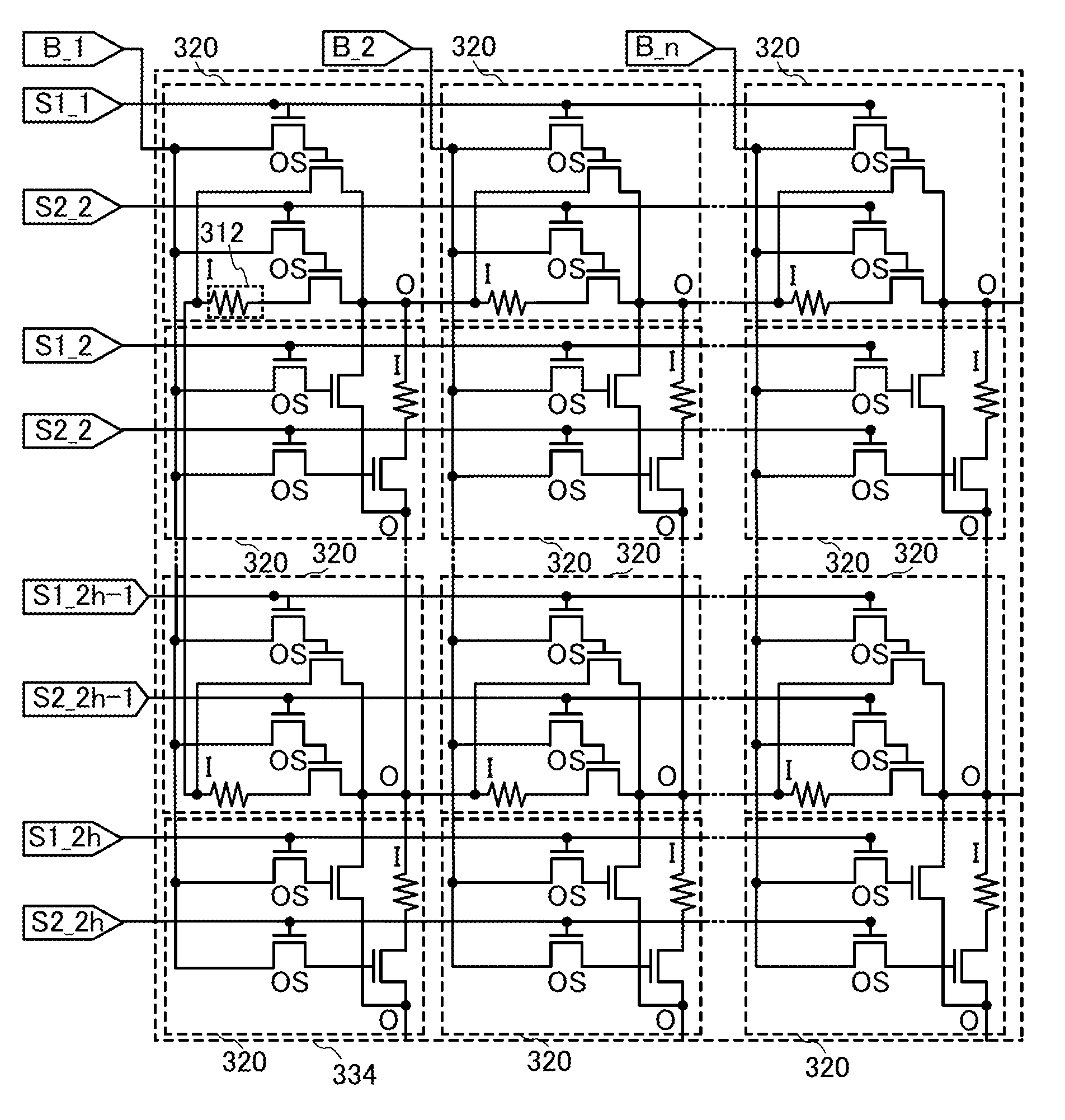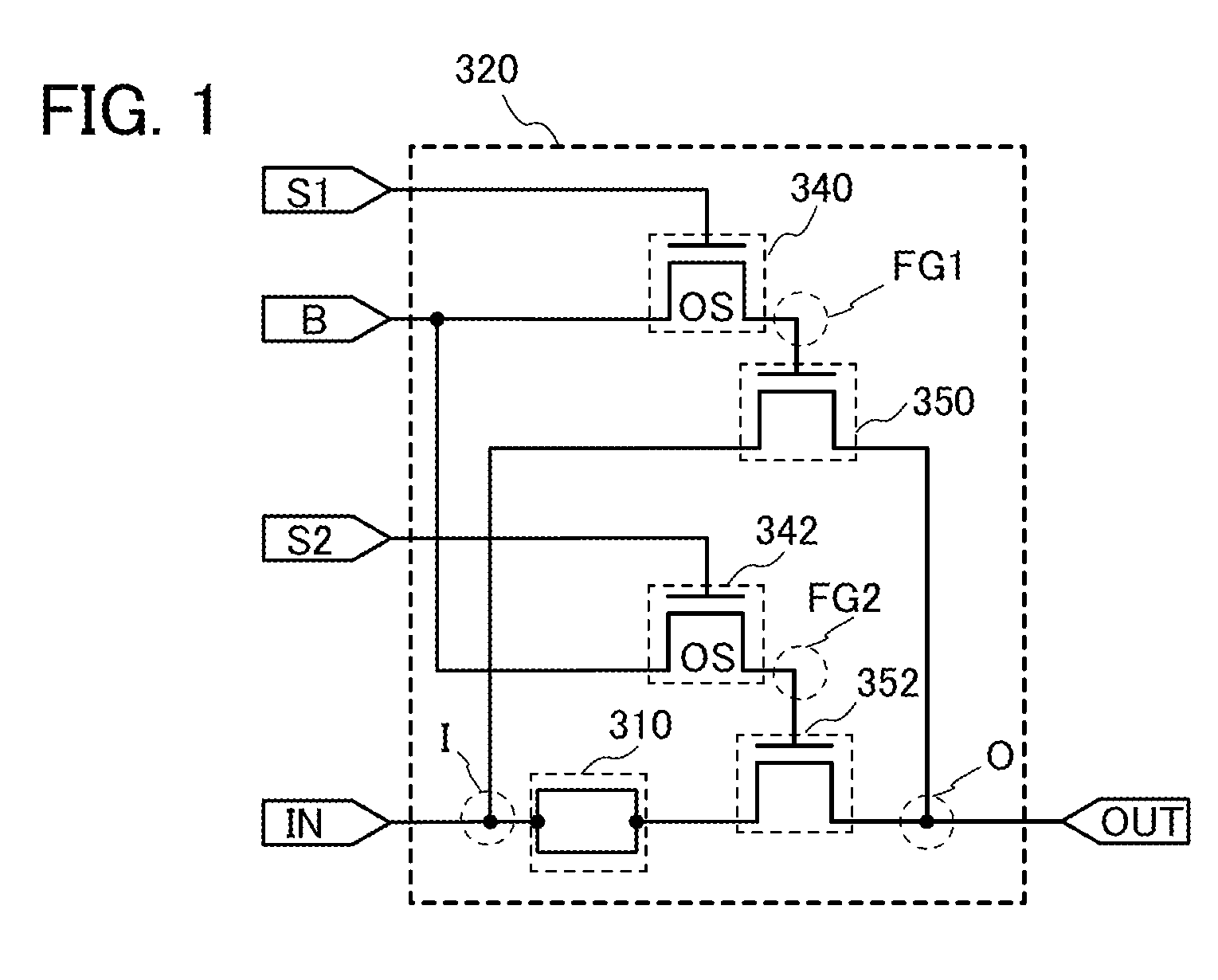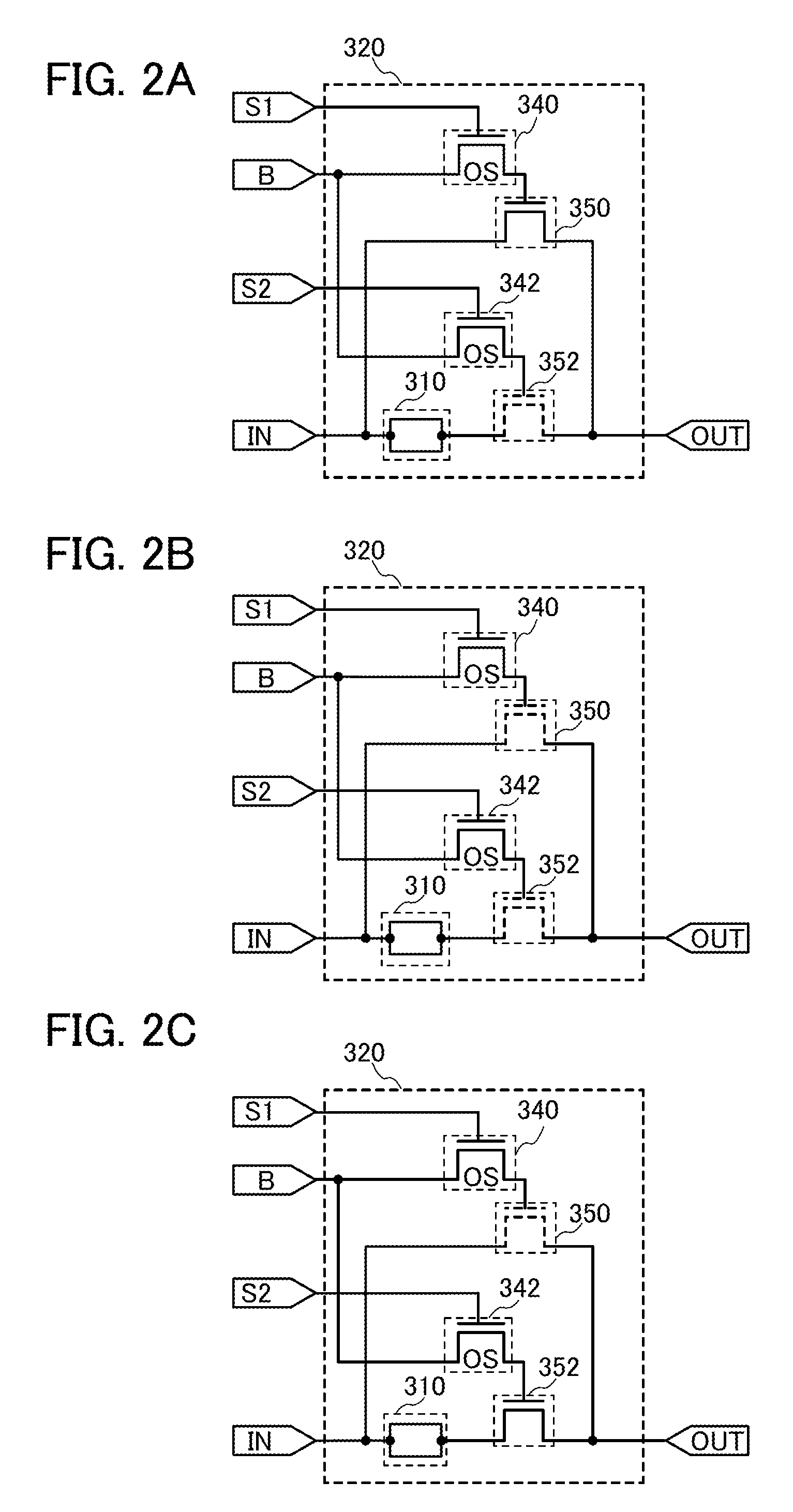Semiconductor device
- Summary
- Abstract
- Description
- Claims
- Application Information
AI Technical Summary
Benefits of technology
Problems solved by technology
Method used
Image
Examples
embodiment 1
[0054]In this embodiment, a circuit configuration of a semiconductor device according to one embodiment of the disclosed invention will be described with reference to FIG. 1 and FIGS. 2A to 2C.
[0055]FIG. 1 illustrates a configuration of a unit cell 320 included in a programmable circuit of this embodiment.
[0056]The unit cell 320 is electrically connected to a bit line B, a unit cell selection line S1, an analog element selection line S2, an input signal line IN, and an output signal line OUT.
[0057]The unit cell 320 includes a first transistor 340, a second transistor 350, a third transistor 342, a fourth transistor 352, and an analog element 310. In the unit cell 320 in FIG. 1, the unit cell selection line S1 and a gate electrode of the first transistor 340 are electrically connected to each other and the bit line B, one of a source electrode and a drain electrode of the first transistor 340, and one of a source electrode and a drain electrode of the third transistor 342 are electri...
embodiment 2
[0099]In this embodiment, an application example of the programmable circuit 332 in Embodiment 1 will be described. Needless to say, an analog element described in this embodiment can be applied to the programmable circuit 330. Further, an analog element other than that described in this embodiment can be applied to the programmable circuit according to one embodiment of the present invention.
[0100]FIG. 5A illustrates an example where the programmable circuit 332 in FIG. 4 is applied to a ladder resistor circuit. A programmable circuit 334 illustrated in FIG. 5A includes a resistor 312 as the analog element 310 included in the unit cell 320.
[0101]In the programmable circuit 334 in FIG. 5A, the output of the unit cell can switch between a conducting state, a non-conducting state, and a conducting state through the resistor 312 by controlling the potential of the first node FG1 (where the first transistor 340 and the second transistor 350 are connected) and the potential of the second...
embodiment 3
[0107]In this embodiment, a method for manufacturing transistors included in the programmable circuit in Embodiment 1 or Embodiment 2 will be described with reference to FIGS. 6A to 6D, FIGS. 7A and 7B, FIGS. 8A to 8C, and FIGS. 9A and 9B. In this embodiment, a method for manufacturing a transistor 110 including an oxide semiconductor (hereinafter also referred to as an oxide semiconductor transistor) and an n-channel transistor 112 is specifically described as an example. Note that the oxide semiconductor transistor 110 corresponds to the first transistor 340 in FIG. 1, and the n-channel transistor 112 corresponds to the second transistor 350 in FIG. 1. In FIGS. 6A to 6D, FIGS. 7A and 7B, FIGS. 8A to 8C, and FIGS. 9A and 9B, the cross section along A-B is a cross-sectional view of a region where the oxide semiconductor transistor 110 and the n-channel transistor 112 are formed, and the cross section along C-D is a cross-sectional view of a node FG where one of a source electrode an...
PUM
 Login to View More
Login to View More Abstract
Description
Claims
Application Information
 Login to View More
Login to View More - R&D
- Intellectual Property
- Life Sciences
- Materials
- Tech Scout
- Unparalleled Data Quality
- Higher Quality Content
- 60% Fewer Hallucinations
Browse by: Latest US Patents, China's latest patents, Technical Efficacy Thesaurus, Application Domain, Technology Topic, Popular Technical Reports.
© 2025 PatSnap. All rights reserved.Legal|Privacy policy|Modern Slavery Act Transparency Statement|Sitemap|About US| Contact US: help@patsnap.com



